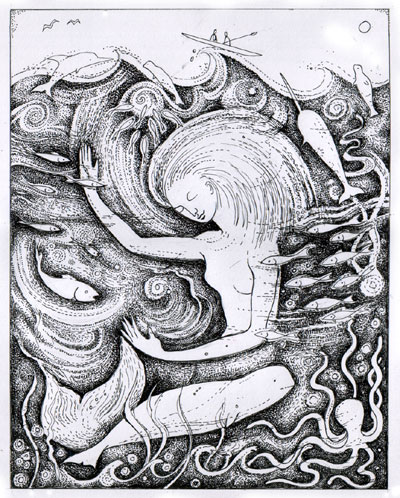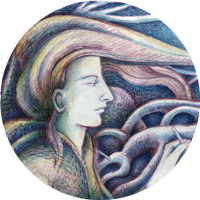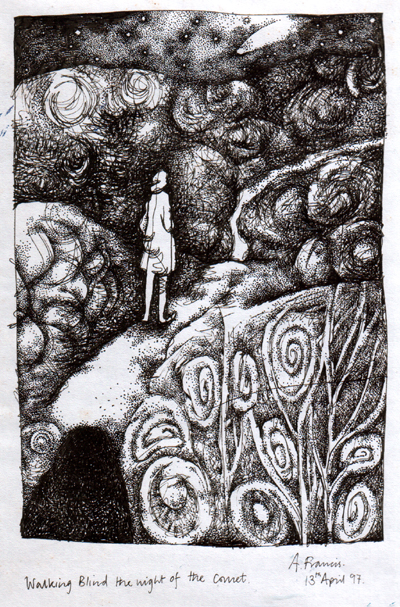So much water this year, the news seems to be inundated with stories of floods and storm surges. Water is taking over, spilling over banks, uniting oceans, seas, rivers… and it is seeping into my art themes once again.
I am into pen and ink once again which takes me back to my days of doing many illustrations for the Brighton based organisation, RiverOcean. In those days my drawings were all about sea creatures and the sea. Well once again my pen and ink drawings are water related but drawn for a small book I’m writing on River, Sea and Moon Goddesses, a theme that I’m especially interested in… back to that underground river that flows beneath my life.

My illustrations here are of perhaps some lesser known goddesses. Take Ved’ava for example, a goddess of the sea or water spirit placated by fishermen of Finno-Ugric peoples. She is sometimes portrayed as a kind of mermaid with a fish tail, playing, singing and seducing humans. If a fishermen saw her it was not a good omen as she was believed to be a drowned person’s spirit.

Then here’s Vejama, or Yemoja, she has several names. A goddess of pregnant women and the River Ogun, a river in West Africa, but she is also a goddess with namesakes in other parts of the world. In Brazil, she is Queen of the Ocean and a goddess of fishermen and shipwreck survivors. She is a mother goddess, a fertlity goddess, a spirit of Moonlight too. I wanted to base my pen and ink illustration on the photo collage of my River Goddess, Moanna. I’m not sure it works, what do you think?

A better-known goddess is Sedna, or Nerrivik, goddess of sea creatures and the Underworld in Inuit mythology. There are various stories about Sedna but most tell of the chopping off of her fingers from which are created the seals, walruses, whales and other marine creatures the Inuit hunt. If angered she withholds the sealife from hunters in her undersea domain and it requires a shaman to metaphorically dive to find her at the bottom of the sea and brush the tangles from her hair to calm her. I am particularly inspired by Inuit culture and myth right now. My goddess still has her hands and she looks a bit wooden so I’ll need to work on her.
This is a ‘taster’ for my book. I’ll be keen to get back to working with colour again soon.


 This morning I thought about a pen and ink drawing I did years ago titled “Walking Blind the Night of the Comet”. It’s dated 14th April 1997 so the comet must have been
This morning I thought about a pen and ink drawing I did years ago titled “Walking Blind the Night of the Comet”. It’s dated 14th April 1997 so the comet must have been